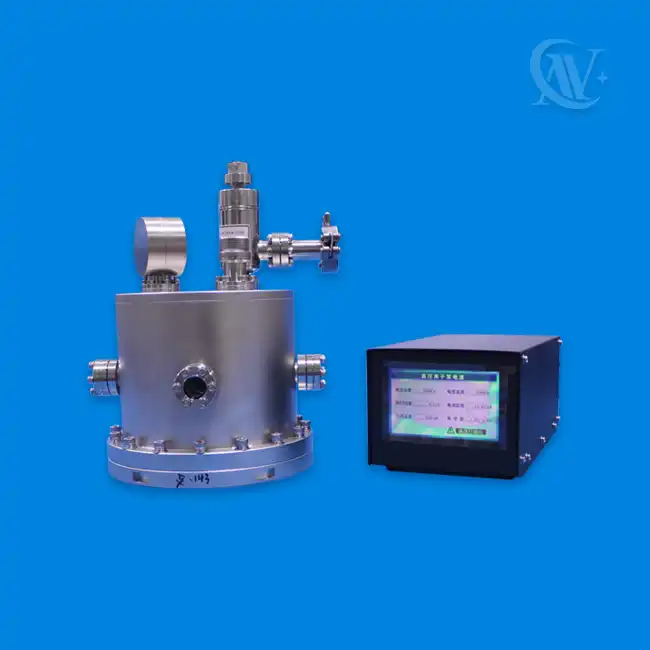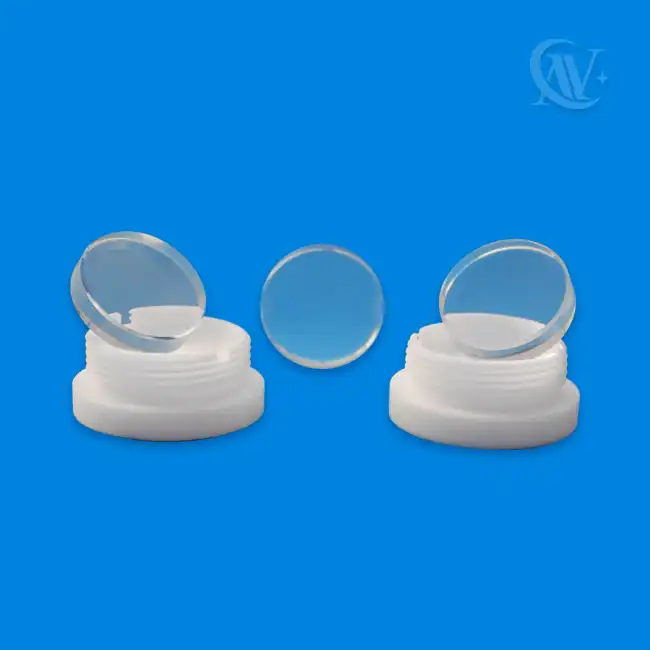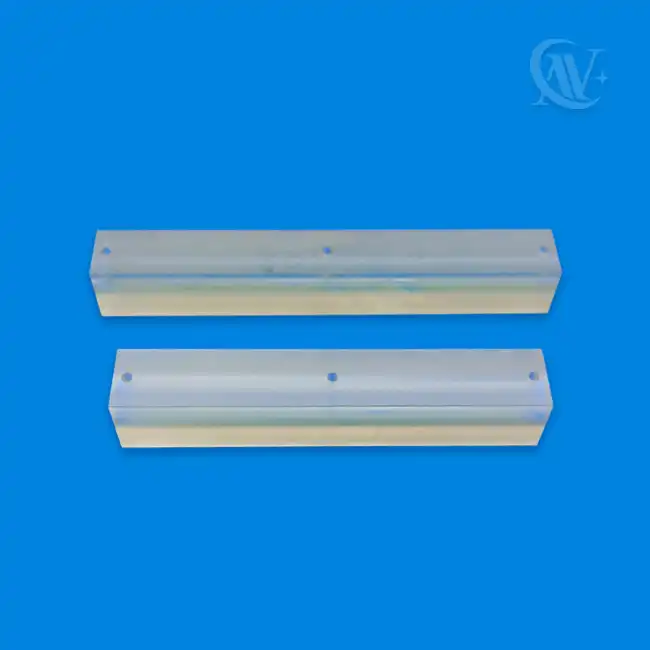What Are the Key Benefits of ULE Super Stable Cavities in Laser Systems?
In the realm of precision optics and laser technology, Ultra-Low Expansion (ULE) Super Stable Cavities have emerged as a game-changing innovation. These remarkable optical devices are revolutionizing various applications, from time frequency measurements to high-power laser systems. This article delves into the pivotal advantages of ULE Super Stable Cavities and their transformative impact on laser technology.
The Foundation of Precision: Understanding ULE Super Stable Cavities
ULE Super Stable Cavities are at the forefront of optical innovation, offering unparalleled stability and precision in laser systems. These cavities are crafted from Ultra-Low Expansion glass, a material renowned for its exceptional thermal properties. The heart of a ULE Super Stable Cavity lies in its ability to maintain dimensional stability even under fluctuating temperature conditions.
The construction of these cavities involves meticulous engineering and advanced manufacturing techniques. The mirrors that form the cavity are typically made from high-reflectivity dielectric coatings, precision-bonded to the ULE glass substrate. This combination results in a cavity that can maintain its shape and optical properties with remarkable consistency, even in challenging environmental conditions.
One of the key attributes of ULE Super Stable Cavities is their incredibly low coefficient of thermal expansion. This property allows them to resist deformation due to temperature changes, a crucial factor in maintaining the stability of laser frequencies. The stability provided by these cavities is often measured in parts per billion or even parts per trillion, showcasing their extraordinary precision.
The applications of ULE Super Stable Cavities span a wide range of scientific and technological fields. They are instrumental in optical atomic clocks, where they help maintain ultra-precise time measurements. In the realm of laser technology, these cavities play a vital role in stabilizing laser frequencies, enabling advancements in fields such as spectroscopy, interferometry, and quantum optics.
Unleashing Precision: The Advantages of ULE Super Stable Cavities in Laser Systems
The integration of ULE Super Stable Cavities into laser systems brings forth a multitude of benefits that are transforming the landscape of optical technology. These advantages extend far beyond simple improvements, offering revolutionary capabilities in various applications.
One of the primary benefits of ULE Super Stable Cavities is their ability to enhance frequency stability in laser systems. By providing a reference cavity with exceptional stability, these devices allow lasers to maintain a consistent frequency output over extended periods. This stability is crucial in applications such as optical atomic clocks, where even minuscule frequency drifts can lead to significant timekeeping errors.
The ultra-low expansion properties of ULE glass contribute significantly to the thermal stability of these cavities. This thermal stability translates into reduced sensitivity to environmental fluctuations, allowing laser systems to operate with high precision even in non-ideal conditions. For applications in scientific research or industrial settings where environmental control may be challenging, this robustness is invaluable.
Another substantial advantage of ULE Super Stable Cavities is their contribution to improved laser coherence. The high-quality factor (Q-factor) of these cavities allows for the generation of laser light with exceptionally narrow linewidths. This enhanced coherence is particularly beneficial in applications such as high-resolution spectroscopy, where the ability to resolve fine spectral features is paramount.
In the realm of high-power lasers, ULE Super Stable Cavities offer remarkable benefits in terms of damage threshold and thermal management. The inherent properties of ULE glass, combined with advanced coating technologies, allow these cavities to withstand high-power laser operation without degradation. This durability makes them ideal for applications in laser weapons, industrial cutting, and materials processing.
The precision offered by ULE Super Stable Cavities also extends to the field of laser gyroscopes. These devices, which rely on the detection of minute frequency shifts to measure rotation, benefit greatly from the stability provided by ULE cavities. The result is enhanced sensitivity and accuracy in navigation systems and inertial measurement units.
Advancing Technology: The Future of ULE Super Stable Cavities
As technology continues to evolve, the potential applications and advancements in ULE Super Stable Cavities are expanding rapidly. Researchers and engineers are constantly pushing the boundaries of what's possible with these remarkable optical devices.
One area of ongoing development is the miniaturization of ULE Super Stable Cavities. As demand grows for compact, portable high-precision laser systems, efforts are underway to reduce the size of these cavities without compromising their stability. This miniaturization could lead to new applications in fields such as portable atomic clocks, field-deployable spectroscopy systems, and compact quantum sensors.
Advancements in coating technologies are also driving improvements in ULE Super Stable Cavities. New techniques for applying ultra-low loss coatings are pushing the boundaries of cavity finesse, allowing for even more precise frequency stabilization and longer photon lifetimes within the cavity. These improvements have far-reaching implications for applications in quantum optics and precision metrology.
The integration of ULE Super Stable Cavities with other cutting-edge technologies is opening up new possibilities. For instance, the combination of these cavities with frequency comb technology is enabling new approaches to ultra-precise spectroscopy and time-frequency transfer. In the field of quantum computing, stable cavities are playing a crucial role in developing quantum memories and long-distance quantum communication systems.
As the demand for high-power laser systems continues to grow, research is ongoing to further enhance the thermal management capabilities of ULE Super Stable Cavities. This includes exploring new geometries and cooling techniques to allow these cavities to handle even higher laser powers without compromising stability.
The field of space-based applications is another frontier for ULE Super Stable Cavities. Their inherent stability and resistance to environmental factors make them ideal candidates for space-based laser systems, including satellite-to-satellite communications and space-based interferometers for gravitational wave detection.
In the realm of precision manufacturing, ULE Super Stable Cavities are enabling new levels of accuracy in laser-based measurement and machining systems. As manufacturing tolerances become increasingly tight, the stability provided by these cavities is becoming ever more crucial in ensuring consistent, high-quality production.
Conclusion
The benefits of ULE Super Stable Cavities in laser systems are truly transformative. From enhancing frequency stability and improving laser coherence to enabling high-power operation and ultra-precise measurements, these optical marvels are pushing the boundaries of what's possible in laser technology. As research and development continue, we can expect to see even more innovative applications and advancements in this exciting field.
For those interested in exploring the cutting-edge capabilities of ULE Super Stable Cavities and other precision optical devices, Xi'an SNP Precision Optics CO., LTD stands at the forefront of innovation. With state-of-the-art manufacturing facilities and a dedicated R&D team, they offer customized solutions to meet the most demanding optical requirements. To learn more about their products and services, including super-polished optical devices and ultra-low loss coatings, contact them at xachaona@163.com.
References
1. Ludlow, A. D., & Ye, J. (2015). Progress on the optical lattice clock. Comptes Rendus Physique, 16(5), 499-505.
2. Notcutt, M., Ma, L. S., Ye, J., & Hall, J. L. (2005). Simple and compact 1-Hz laser system via an improved mounting configuration of a reference cavity. Optics letters, 30(14), 1815-1817.
3. Matei, D. G., Legero, T., Häfner, S., Grebing, C., Weyrich, R., Zhang, W., ... & Sterr, U. (2017). 1.5 μm lasers with sub-10 mHz linewidth. Physical review letters, 118(26), 263202.
4. Koechner, W., & Bass, M. (2003). Solid-state lasers: a graduate text. Springer Science & Business Media.
5. Riehle, F. (2006). Frequency standards: basics and applications. John Wiley & Sons.
YOU MAY LIKE
 VIEW MORESuper Stable Vacuum System
VIEW MORESuper Stable Vacuum System VIEW MORECold Atom Vacuum Glass Cavity
VIEW MORECold Atom Vacuum Glass Cavity VIEW MORESingle Side Super Smooth Spherical Mirror Substrate
VIEW MORESingle Side Super Smooth Spherical Mirror Substrate VIEW MORESingle Side Super Smooth Flat Concave Mirror Substrate
VIEW MORESingle Side Super Smooth Flat Concave Mirror Substrate VIEW MORESingle Crystal Silicon Super Low Loss Flat Mirror
VIEW MORESingle Crystal Silicon Super Low Loss Flat Mirror VIEW MORELaser Cavity
VIEW MORELaser Cavity VIEW MORELarge Aperture Super Smooth Window
VIEW MORELarge Aperture Super Smooth Window_1742553952792.webp) VIEW MORESapphire Super Stable Cavity-Circular Cavity
VIEW MORESapphire Super Stable Cavity-Circular Cavity



_1736302755188.webp)

